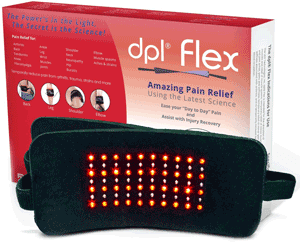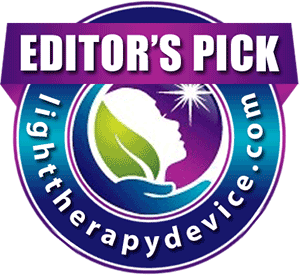Pregnant women who enjoy what is often called the “pregnancy glow” may consider their hormones to be a blessing, at least to their complexions. However, not all pregnant women are that lucky.1
Acne may develop during pregnancy or continue from before pregnancy.1 Why, you ask? More research is needed to answer this question, but scientists think it may happen from shifting hormones or changes in the immune system.2-3
Regardless, acne oftentimes affects a person’s self-esteem and mental well-being. Moreover, pregnant women are often fearful to do anything about it because they worry about harming their developing baby from medications and therapy.4
Does this sound like you or someone you know? Well, the good news is you can still treat acne during pregnancy.
Not all acne treatments are safe during pregnancy, but pregnant women do have options.4
A dermatologist, or skin doctor, can be a great resource in helping you decide how to safely manage your acne.4
The U.S. Food and Drug Administration (FDA) has classified all medications based on available evidence of safety to developing fetuses. Dermatologists have used this information to formulate a standardized treatment approach.4
Let’s discuss the treatment options that dermatologists recommend to pregnant women. We will cover over-the-counter products, prescription medications, and light therapy.
What medications are currently available for safe treatment of acne in pregnant women?
If your acne is mild, you can purchase products over-the-counter from your local drugstore. Look for products containing glycolic acid. This ingredient is generally considered safe for pregnant women when applied topically, that is, directly to the skin. Other options include benzoyl peroxide and salicylic acid.2-5
However, you may need a stronger option. If so, talk to your dermatologist. They can customize a treatment plan for you based on the type of acne you have and its level of severity.4
For mild, non-inflammatory acne, that is, acne that is closer to the surface of the skin and is not bacterial, a dermatologist may prescribe a topical medicine, such as azelaic acid.2-5
For mild, inflammatory acne, that is, acne that is red, swollen, and bacterial-based, a dermatologist may add on a topical antibiotic such as erythromycin or clindamycin.2-5
Dermatologists may treat moderate acne with an oral antibiotic, such as erythromycin, azithromycin, or cephalexin.2-5
Rare, severe cases of acne may require a short course of oral corticosteroid medication. Dermatologists will only prescribe this medication after the first trimester.2-5
Generally, dermatologists avoid hormonal therapy, retinoids, and classes of antibiotics called tetracyclines and fluoroquinolones in pregnant women.5
If you are not responding to the above acne treatments or you do not feel comfortable with some of the oral medications, light-based therapy may be an option.
So what’s the deal with light-based therapy for acne in pregnant women?
It is generally not used first as a treatment for acne in either pregnant or non-pregnant women. However, it is certainly an option.4 Different types of light therapies are used to treat acne, including blue, red, and blue + red light devices; at-home devices; photodynamic therapy; and laser therapy.6
Blue, red, and blue + red light devices are a popular choice amongst pregnant women. Blue and red light comprise what we refer to as “visible light” because you are able to see the colors.6
“Blue light has been shown to penetrate the skin’s hair follicles and pores which harbor bacteria and can cause inflammation, and therefore acne. Bacteria are very sensitive to the blue light spectrum – it shuts down their metabolism and kills them,” Marnie Nussbaum, MD, a New York City-based dermatologist, told Shape magazine in January 2017.7
“Red light has traditionally been used for anti-aging purposes because it helps stimulate collagen,” Joshua Zeichner, MD, another New York City-based dermatologist, explained to Shape magazine. “At the same time, it helps reduce inflammation, which is why it is useful alongside blue-light in treating acne.”7
The wavelengths specific to blue and red light are considered safe for use in pregnant women.5
This form of light therapy can be carried out at the doctor’s office or at home. When performed by a dermatologist, they will administer this treatment once weekly in their office. However, insurance will not cover this service (AAD), and it can be costly!
At-home devices may be more convenient and cost-effective.8 Heidi Waldorf, MD, a cosmetic dermatologist from New York, offered her perspectives on at-home light therapy products in an interview with Huffington Post:
“[It] is a reasonable option for anyone who gets the occasional pimple but finds acne spot treatments containing salicylic acid, benzoyl peroxide or resorcinol too drying,” Waldorf said.8
“Blue light is anti-bacterial and the red light can briefly reduce oil production in sebaceous glands,” she added. “Neither is very potent without the use of topical photosensitizers (photodynamic therapy), but it can be useful for breakthrough pimples for patients on most prescription or over-the-counter acne regimens.”8
The FDA has approved some at-home devices. However, the American Academy of Dermatology cautions that because the technology is so new, more research is needed to determine how effective these products are.4
In photodynamic therapy (PDT), a dermatologist will apply a topical solution to your skin prior to the administration of light therapy. The solution makes the skin more sensitive to light therapy.6 However, per FDA safety ratings, the compounds typically used are not as safe to a developing fetus as other available options.2-3, 5-6
Laser therapy shows promise as a viable treatment option for pregnant women, as it has an excellent safety profile. However, further study is required to ascertain its safety and efficacy for pregnant patients suffering from acne.9
Good acne skin-care is needed to maximize your results
Regardless of the options you select for management of your acne, you must practice good skin care practices to benefit from your treatment plan. Dermatologists recommend the following basic skin care tips:
- Wash your face at least twice daily, more if you sweat.
- Apply face wash using your fingertips rather than a wash-cloth or sponge. Your skin will be less irritated.
- Select gentle products for your skin, including those that do not contain alcohol. Skin irritation worsens the appearance of acne.
- Use lukewarm water to wash your face.
- Shampoo regularly, especially if you have oily hair.
- Do not pick at your acne. Doing so will slow down the healing of your skin and may lead to scarring.
- Avoid touching your face.10
Let’s wrap up by discussing popular options on the market if you are interested in at-home light therapy.
The Tria Positively Clear 3-Step Skincare Solution ($169 on Amazon.com) addresses acne in 3-steps, using blue light therapy. The set includes the Positively Clear Acne Clearing Blue Light, Positively Clear Foam Cleanser, and Positively Clear Spot Treatment. Neutrogena’s Light Therapy Acne Mask ($29.97 on Amazon.com) simultaneously delivers blue and red light to disrupt acne. Neutrogena’s Light Therapy Acne Mask Activator ($13.76 on Amazon.com) connects to the mask to turn it on. Me Clear Anti-Blemish Device ($25.25 on Amazon.com) uses blue light, sonic vibration, and gentle warming to treat acne spots. LightStim for Acne ($169 on Amazon.com) is a hand-held device that delivers blue light to your skin to treat acne. reVive LED Light Therapy Acne Treatment System ($99 on Amazon.com) is also blue light therapy device designed to destroy acne-causing bacteria. Foreo Espada Acne-Clearing Blue Light Pen ($149 on Amazon.com) dually uses blue light and sonic pulsations to treat acne.
All of these products comprise the newest generation of over-the-counter, acne-fighting options. Though these devices are approved by the FDA for treatment of acne, please note that the American Academy of Dermatology still advises consumers to consult with their dermatologist to achieve the best and safest outcome from use of any at-home light therapy device.4
References
- American Pregnancy Association. Pregnancy Glow. Available at: https://americanpregnancy.org/your-pregnancy/pregnancy-glow. Accessed September 21, 2018.
- Chien AL, Rainer B, Sachs DL, Helfrich YR. Treatment of Acne in Pregnancy. J Am Board Fam Med. 2016;29(2):254-262.
- Pugashetti R, Shinkai K. Treatment of acne vulgaris in pregnant patients. Dermatol Ther. 2011;26:302-311.
- American Academy of Dermatology. Acne can put a damper on hopes of glowing skin during pregnancy. March 2014. Available at: https://www.aad.org/media/news-releases/acne-can-put-a-damper-on-hopes-of-glowing-skin-during-pregnancy. Accessed September 21, 2018.
- Kong YL, Tey HL. Treatment of Acne Vulgaris During Pregnancy and Lactation. Drugs. 2013;73:779-787.
- American Academy of Dermatology. Lasers and lights: How well do they treat acne? Available at: https://www.aad.org/public/diseases/acne-and-rosacea/lasers-and-lights-how-well-do-they-treat-acne. Accessed September 21, 2018.
- Gilbert, K. Can At-Home Blue Light Devices Really Clear Acne? January 2017. Shape. Available at: https://www.shape.com/lifestyle/beauty-style/can-home-blue-light-devices-really-clear-acne. Accessed September 21, 2018.
- Ledbetter, Carly. Dermatologists Explain How Light Therapy Works To Treat Acne. July 2017. Huffington Post. Available at: https://www.huffingtonpost.com/entry/are-at-home-light-therapy-treatment-for-acne-worth-it_us_5963efc4e4b005b0fdc7ab8f. Accessed September 21, 2018.
- Rai R, Natarajan K. Laser and light based treatments of acne. Indian J Dermatol Venereol Leprol. 2013;79(3):300-309.
- American Academy of Dermatology. Acne: Tips for Managing. Available at: https://www.huffingtonpost.com/entry/are-at-home-light-therapy-treatment-for-acne-worth-it_us_5963efc4e4b005b0fdc7ab8f. Accessed September 21, 2018.
Photo credit: DONOT6_STUDIO/Shutterstock


